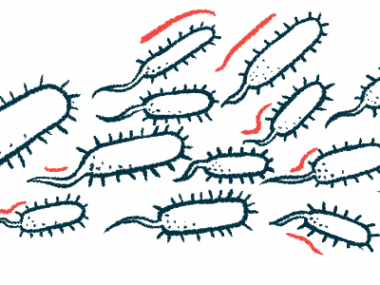Rituximab treatment resolves serious case of secondary CAD
Woman, 20, developed CAD triggered by Epstein-Barr virus infection
Written by |

Treatment with rituximab — commonly used off-label for cold agglutinin disease (CAD) — was reported to successfully resolve a serious case of CAD secondary to an Epstein-Barr virus (EBV) infection and potential contraceptive pill toxicity in a young woman in Europe.
The woman had developed severe jaundice and liver failure that was rapidly worsening, according to a case report from researchers in Italy.
Jaundice, or yellowing of the skin and white parts of the eyes, is associated with excess blood levels of bilirubin, a yellow pigment released when red blood cells break down. Both CAD and EBV infection can cause bilirubin levels to rise.
The use of rituximab effectively resolved the woman’s condition, likely due to its deadly effects on immune B-cells, which are the main targets of EBV and the producers of the self-reactive antibodies that drive CAD.
“After a few weeks and four rituximab administrations, we observed a progressive amelioration of the [patient’s] clinical condition,” the researchers wrote.
The study, titled “A Rare Case of Life-Threatening Jaundice Caused by Epstein-Barr Virus Infection and Secondary Cold Agglutinin Syndrome Successfully Treated with Rituximab,” was published in the International Medical Case Reports Journal.
Patient had developed severe jaundice and liver failure
CAD is an autoimmune disease caused by self-reactive antibodies called cold agglutinins, which bind to red blood cells at low temperatures, causing them to clump together and be marked for destruction.
When this is triggered by an underlying illness, such as an infection, it’s called secondary CAD. While it often causes mild or no symptoms, an Epstein-Barr virus infection is a common cause of secondary CAD, with several cases reported in the literature.
Red blood cell destruction, or hemolysis, releases bilirubin, which is normally processed in the liver into a form that can be removed from the body. However, when there is too much bilirubin, or if the liver cannot process it properly, jaundice occurs. This can be due to various reasons, including liver inflammation or an increase in hemolysis.
Here, a team of researchers from a university in Italy described the case of a 20-year-old woman whose severe jaundice and liver failure were found to be the result of CAD secondary to an EBV infection, along with potential toxicity associated with contraceptive medication.
The woman, who was obese, went to the emergency room complaining of fever, pain on the left side of her abdomen, and extreme fatigue over the previous few days. A physical examination showed severe jaundice and blood tests revealed elevated levels of liver damage markers and hemolysis markers.
To find out what was causing this rapid worsening, the clinicians conducted a thorough medical review and ran a battery of tests. The team found that the woman had an EBV infection, along with high levels of cold agglutinins and other immune proteins indicative of CAD. There also were signs consistent with EBV infection and potential drug-induced liver injury.
“These findings suggested liver failure due to EBV infection, [secondary CAD] and a possible oral contraceptive pill toxicity,” the researchers wrote.
Treatment with 4 doses of rituximab improves patient’s condition
Based on her diagnosis, the woman was treated with corticosteroids and intravenous immunoglobulins — a treatment that aimed to neutralize cold agglutinins. However, her condition worsened, and she developed liver failure, excess bilirubin-related kidney injury, and respiratory failure that required respiratory support. She was transferred to the hospital’s intensive care unit.
“Given the complexity and the multifactorial [causes] of the case, multiple clinical specialists were asked to carry out the best patient management,” the researchers wrote.
The patient was started on a number of treatments meant to reduce bilirubin, ease liver damage, and improve kidney function. She was also treated with rituximab (marketed as Rituxan and MabThera, with generics available), a treatment that kills B-cells.
“Rituximab treatment proved effective in depleting EBV-infected [B-cells] and those involved in [CAD-related hemolysis],” the researchers wrote.
[We present] a unique case of life-threatening multifactorial hepatic [liver] failure treated successfully with rituximab.
Her condition improved after a few weeks and four rituximab doses. Jaundice disappeared, her liver function tests normalized, and she no longer needed respiratory support. She was no longer positive for EBV infection or cold agglutinins.
After one month of hospitalization, the woman was discharged with normal liver-, kidney-, and blood-related values.
“This rare case highlights how challenging the differential diagnosis and treatment of [excess bilirubin] can be, presenting a unique case of life-threatening multifactorial hepatic [liver] failure treated successfully with rituximab,” the researchers wrote.






